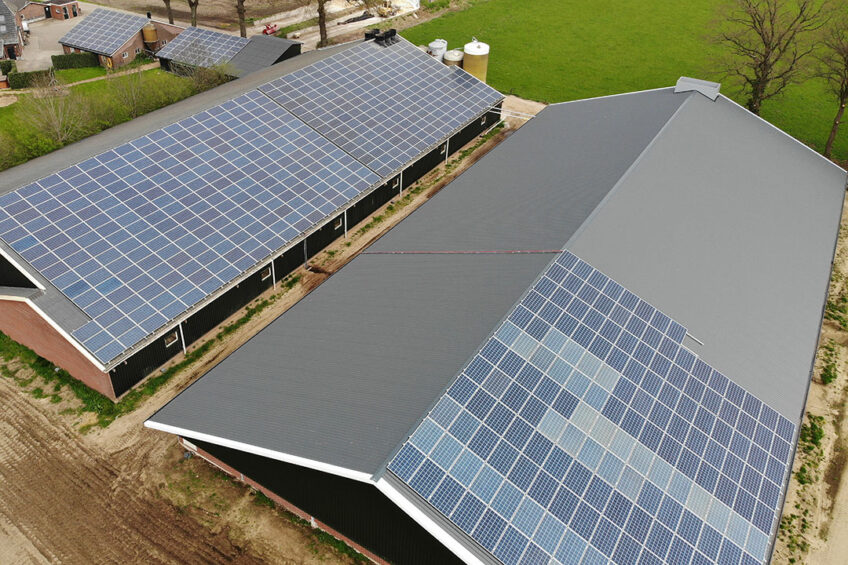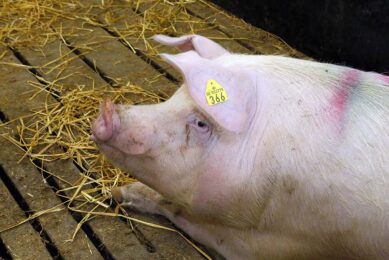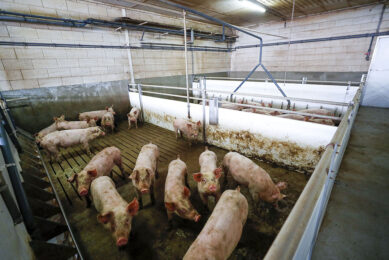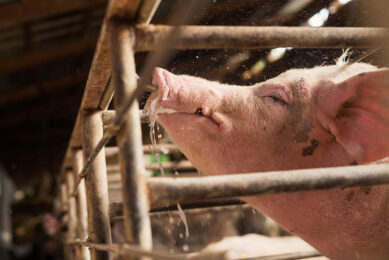Impact of climate change on swine housing systems

Global temperatures are likely to rise in the long term, which will have a lasting impact on how pigs are produced. There are various practical ways producers can prepare for climate change. What are they?
Climate change is defined as long-term deviations in climate patterns and temperature. Due to increased global temperature, desert encroachment, deforestation and heat waves, climate change will add to the burden of heat stress, particularly in tropical regions and during summer. Higher temperatures result in lower fertility rate, decreased feed intake and reduced growth rate in pigs.
Survival of insect pests
In addition, warmer weather enhances survival of insect pests such as flies and lice that can spread diseases. Higher disease incidence in a swine production unit will increase the costs of veterinary service and medicines. Furthermore, climate change can result in droughts, decreased water availability, enhanced production costs due to increased energy costs for cooling and ventilation and higher cost of feed due to decreased crop production. In the United States, heat stress has been estimated to cost between $ 300 and $ 900 million annually, depending on the year and method of estimation. Therefore, pig production systems need to adapt to climate change to reduce the negative impacts.
Consequences of climate change for pig production
Heat stress effects
Heat stress results from an accumulation of energy in the body caused by an imbalance between heat production and heat loss. Pigs are very vulnerable to high temperatures, especially when they cannot access a wallow or watering device. Heat stress can be acute or chronic.
The occurrence of more frequent extreme climatic events is expected to lead to additional price increases for the most important agricultural crops
Acute heat stress means exposure to high ambient temperatures over a short period of time. Chronic heat stress describes exposure to a high ambient temperature over a long period of time (days to weeks) which allows partial or total acclimatisation to the environment. Heat stress results in limited nutrient intake, which in turn reduces production performance and compromises health and welfare. In addition, prenatal heat stress alters the distribution of energy between lean and fat deposition, resulting in fatter carcasses at slaughter.
Availability and quality of feed resources
Climate change can cause cumulative changes in the production of major crops and reduce the quality of raw materials for pig feed. An increase of 1°C in the global mean temperature is predicted to reduce global yields of wheat by 6.0% and of maize by 7.4%. Under the most rapid warming scenario, a 16% decline in winter wheat yield, a 20% decline in winter barley yield and a 42% decline in spring barley yield are predicted by the end of the century.
The occurrence of more frequent extreme climatic events is expected to lead to additional price increases for the most important agricultural crops such as wheat, maize and soybeans, which are used to feed livestock.
Health and welfare
Climate change can affect pig health and welfare, either directly by causing death or modifying the ability to cope with pathogenic agent exposure, or indirectly by increasing the frequency of exposure to existing or emerging diseases by creating favourable conditions for the development of vectors and their host reservoirs. In addition, if the temperature in the farrowing unit exceeds 22°C, the risk of stillbirth increases due to the prolonged duration of farrowing and the associated risk of hypoxia for piglets.
How do pigs regulate their body temperature?
Pigs are homeothermic animals; that is, they can keep deep body temperature relatively constant within narrow limits even with wide variation of the surrounding climatic environment. Pigs have a limited number of functional sweat glands, and they are challenged by heat stress to maintain their body temperature. Pigs regulate their body temperature through panting and cooling their skin. Panting increases airflow and evaporation of water from the lungs, which releases heat. In addition, pigs lie on cool surfaces or in cooler shaded areas to help dissipate heat from their bodies, or they cover themselves in water or mud to help with evaporative cooling.
Scraper systems cause a significant reduction in a barn’s air emissions and provide better barn air quality
Management options to cope with climate change
Building structure
The following alterations in the housing system are recommended: increasing structural strength and insulation of buildings to withstand higher winds, using natural light when possible and LED light bulbs when artificial light is needed, providing creep boxes in a farrowing unit to decrease the overall building temperature, installing solar panels for energy usage and considering outdoor or partial outdoor finishing to save energy.
Manure handling
Scraper systems cause a significant reduction in a barn’s air emissions and provide better barn air quality. With a scraper system, manure is moved out of the barn twice or more each day, resulting in fewer anaerobically created gases. In addition, incorporating energy recovery systems, such as anaerobic digesters, into housing designs will result in improved energy balance.
Ventilation
Ventilation systems should be designed to ensure uniform air quality throughout the barn at specific parameters, including temperature, humidity, air speed and carbon dioxide concentrations. Centrifugal fans are more efficient than axial fans, and they work better against external wind forces and are easier to maintain. In addition, ceiling inlets throughout the barn provide uniform and good air quality in the barn. Fans and inlet controls need to be synchronised and controlled by at least two temperature sensors per room to ensure proper and uniform conditions.
Conclusion
The potential impacts of climate change on the swine industry are not limited to the effects of high ambient temperature on pig health, welfare and performance. Climate change can also affect feed cost, and since feed costs comprise around 60–70% of the total costs of production, the swine industry needs to minimise the current and future impacts of climate change on productivity and profitability to remain competitive.
Various adaptation options are available for building housing systems to ensure climate improvement for pigs. However, further research and additional educational programs should be conducted by government and non-government agencies on climate change mitigation, adaptation and resilience strategies to minimise the adverse effects.











